Deep in the Arctic Circle, the USSR was drilling deeper into the Earth than anyone before. One artist has combined archaeology and invention to bring its spirit back in sound.
Meet SG-3 (СГ-3) — the Kola Superdeep Borehole. You know when kids would joke about digging a hole to China? Well, the USSR’s borehole got to substantial depths – 12,262 m (over 40,000 ft) at the time of the USSR’s collapse.
The borehole was so epic – and the Soviets so secretive – that it has inspired legends of seismic weapons and even demonic drilling. (A YouTube search gets really interesting – like some people who think the Soviets actually drilled into the gates to Hell.)
Artist Dmitry Morozv – ::vtol:: – evokes some of that quality while returning to the actual evidence of what this thing really did. And what it did is already spectacular – he compares the scale of the project to launching humans into space (well, sort of in the opposite direction).
Watch:
vtol’s installation 12262 is the perfect example of how sound can be made material, and how digging into history can produce futuristic, post-contemporary speculative objects.
The two stages:
Archaeology. Dima absorbed SG-3’s history and lore, and spent years buying up sample cores at auctions as they were sold off. And twice he visited the remote, ruined site himself – once in 2016, and then back in July with his drilling machine. He even located a punched data tape from the site, though of course it’s difficult to know what it contains. (The investigation began with the Dark Ecology project, a three-year curatorial/research/art project bringing together partners from Norway, Russia, and across Europe, and still bearing this sort of fascinating fruit.)
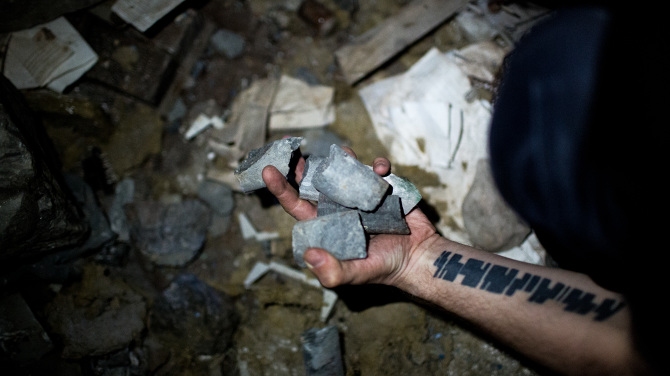
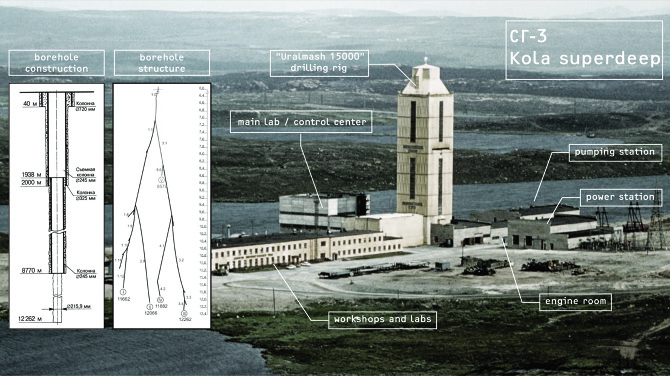
Invention: The installation itself is a kinetic sound instrument, reading the coded information from the punch tape and operating miniature drilling operations, working on actual core samples. The sounds you hear are produced mechanically and acoustically by those drills.
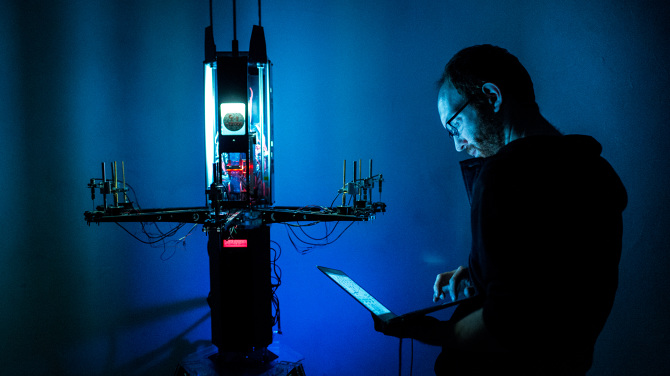
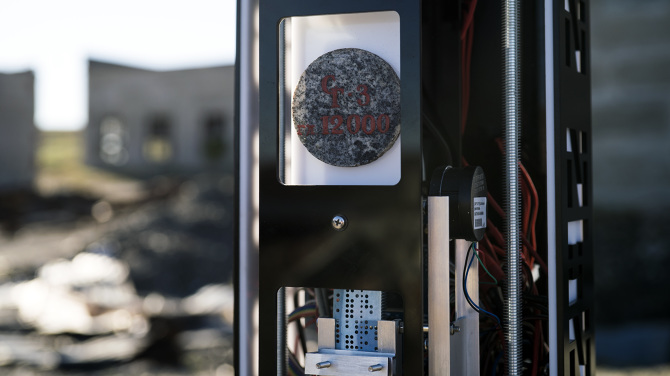
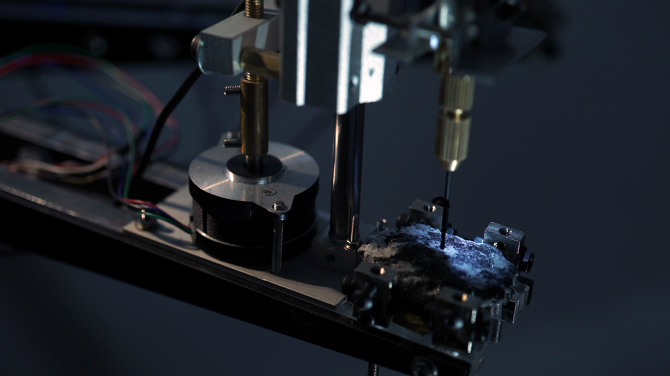
As usual, Dima lists his cooking ingredients, though I think the sum is uniquely more than these individual parts. It’s as he describes it, a poetic, kinetic meditation, evocative both intellectually and spiritually. That said, the parts:
soft:
– pure data
– max/msphard:
– stepper motors x5 + 2
– dc-motors x5
– arduino mega
– lcd monitor
– custom electronics
– 5 piezo microphones
– 2 channel sound system
Details:
Commission by NCCA-ROSIZO (National Centre for Contemporary Arts), special for TECHNE “Prolog” exhibition, Moscow, 2018.
Curators: Natalia Fuchs, Antonio Geusa. Producer: Dmitry Znamenskiy.
The work was also a collaboration with Gallery Ch9 (Ч9) in Murmansk. That’s itself something of an achievement; it’s hard enough to find media art galleries in major cities, let alone remote Russia. (That’s far enough northwest in Russia that most of Finland and all of Sweden are south of it.)
But the alien-looking object also got its own trip to the site, ‘performing’ at the location.
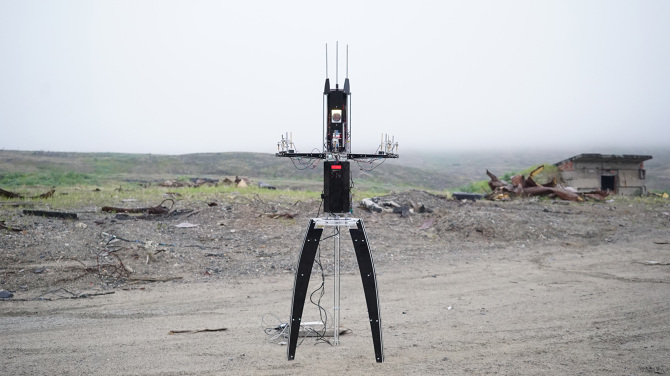
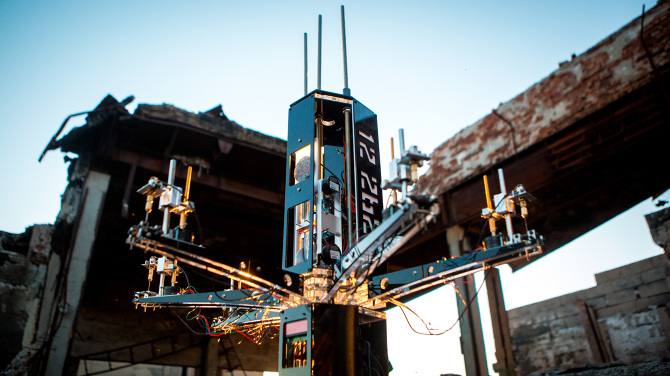
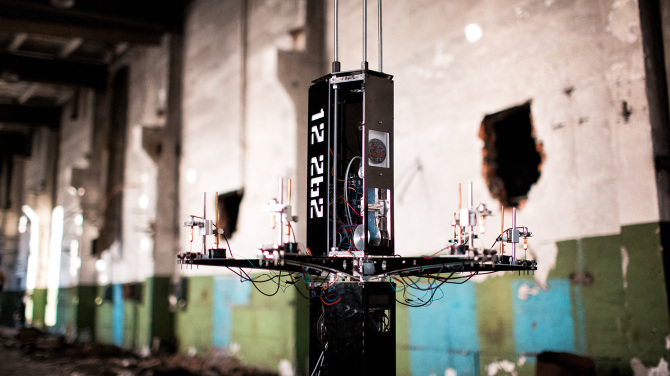
It’s appropriate that would happen in Russia. Cosmism visionary Nikolai Fyodorovich Fyodorov and his ideas about creating immortality by resurrecting ancestors may seem bizarre today. But translate that to media art, which threatens to become stuck in time when not informed by history. (Those who do not learn from history are doomed to make installation art that looks like it came from a mid-1990s Ars Electronica or Transmediale, forever, I mean.) To be truly futuristic, media art has to have a deep understanding of technologies progression, its workings, and all the moments in the past that were themselves ahead of their time. That is, maybe we have to dig deep into the ground beneath us, dig up our ancestors, and construct the future atop that knowledge.
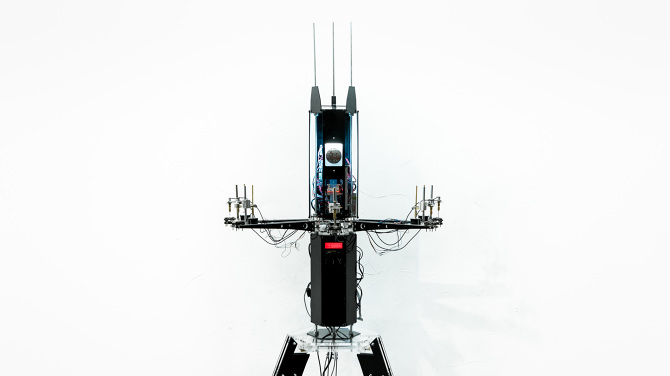
At Spektrum Berlin this weekend, there’s also a “materiality of sound” project. Fellow Moscow-based artist Andrey Smirnov will create an imaginative new performance inspired by Theremin’s infamous KGB listening device of the 1940s – also new art fabricated from Soviet history – joined by a lineup of other artists exploring similar themes making sound material and kinetic. (Evelina Domnitch and Dmitry Gelfand, Sonolevitation, Camera Lucida, Eleonora Oreggia aka Xname share the bill.)
To me, these two themes – materiality, drawing from kinetic, mechanical, optical, and acoustic techniques (and not just digital and analog), and archaeological futurism, employing deep historical inquiry that is in turn re-contextualized in forward-thinking, speculative work, offer tremendous possibility. They sound like more than just a zeitgeist-friendly buzzword (yeah, I’m looking at you, blockchain). They sound like something to which artists might even be happy to devote lifetimes.
For another virtual trip to the borehole, here’s Rosa Menkman’s film on a soundwalk at the site in 2016.
Related (curator Natalia Fuchs, interviewed before, also curated this work):
Enter the trippy, fanciful world of Soviet light art studio Prometheus
And on the kinetic-mechanical topic:
Watch futuristic techno made by robots – then learn how it was made
Full project details:
http://vtol.cc/filter/works/12262